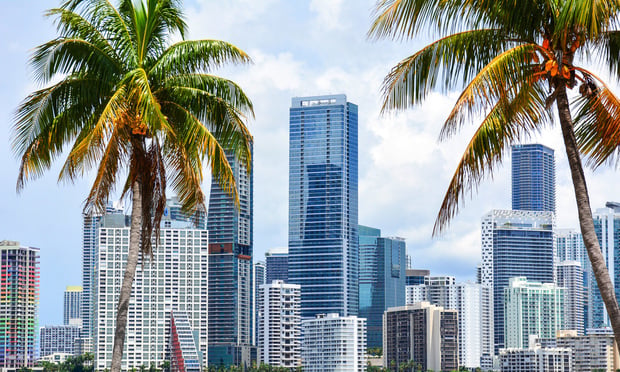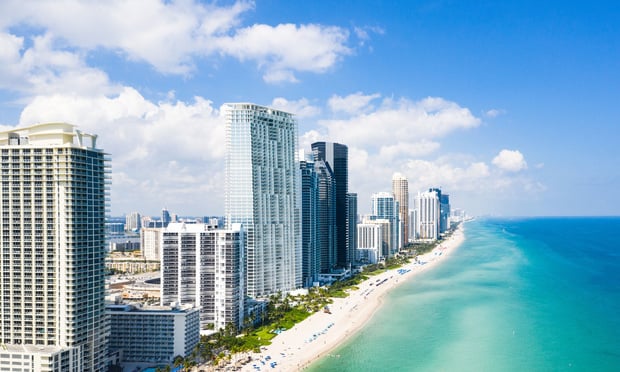 David Winker, left, and Anthony Parrish, right.
David Winker, left, and Anthony Parrish, right.
On Dec. 4, the Miami Planning and Zoning Appeals Board (PZAB) voted 8-1 to recommend repealing special area plans (SAPs) from Miami 21's zoning code. This astounding vote came after residents of Little Haiti, Palm Grove and Buena Vista testified that SAPs are destroying their neighborhoods. This was followed by the introduction of an emergency pocket item by Commissioner Manolo Reyes at the December commission meeting organizing a task force to review the impact of the Miami 21 zoning code on Miami's neighborhoods.
Why Is This Happening Now?
Projected sea level rise is making close-by, low-density, high and dry land attractive to developers.
The result :
- Rapid gentrification in poor minority areas
- Neighborhood conservation districts (NCDs) being unenforced
- Demolition of "contributing" historic houses
- For-profit private schools imposed on neighborhoods
- Parkland proposed for for-profit uses
- Gridlocked traffic
- Beaches closed for fecal contamination
The City Has Defaulted
There is indeed a housing crisis. The city has defaulted to the easiest solution: Let the developers build it. But where and for how much?
The city has tools for directing development. Developers adapt; they take the path of least resistance. What we are seeing now is altering and even destroying our neighborhoods without regard to what makes each neighborhood special.
Are there alternatives? Isn't it just NIMBYism (Not In MY Backyard) that makes neighborhoods resist the inevitable?
Miami 21's successional rules can provide the answer.
Not All Neighborhoods Are the Same
There are crucial differences between neighborhoods: Is a neighborhood predominantly renter or owner occupied? Is it "rich" or "poor"? Family oriented or occupied by singles and childless couples?
Owners in wealthier single-family and duplex transects (T 3) are not forced out by rapidly increasing rents. Family-dominated neighborhoods care less about public transportation than about cut-through commuter traffic. Working-class neighborhoods prioritize affordable rent and access to public transportation.
While there are citywide issues, no single neighborhood should be forced to cope with an existential threat brought by a lack of adherence to both the letter and the intent of Miami 21, which was intended to allow "successional"-balanced growth over time.
One neighborhood is running out of time: Little Haiti.
Is Little Haiti a "Neighborhood"?
Unless we answer "yes," we will never understand why we all must wage this war together.
History of Zoning
Since 1926 individual property rights ("a man's home is his castle") are circumscribed by zoning laws protecting the community's right to regulate its health, safety and welfare. The rules for balancing these conflicting rights are set forth in Miami 21, enacted in 2009.
Miami 21
Miami 21 is a "form based" zoning code dividing Miami into eight major categories (transects), from T 1 "rural" to T 6 "urban core," plus civic and industrial transects.
Sub-categories allow varying uses, heights and densities. Heights range from two stories to 80 stories, plus "bonus" floors. Density goes from nine to 150 units per acre. Allowable "uses" includes sub-categories "restricted," "limited" and "open." Property owners may apply for warrants, waivers and exceptions to allow additional uses or for "relief" from zoning limitations, or for variances from both use. There are also "zoning overlays" for NCDs and historically designated neighborhoods.
The successional rules are intended to allow each less urbanized transect to transform itself over time to the next higher transect. The multiple categories, sub-categories and specified administrative provisions are intended to supply certainty without eliminating flexibility.
Now, however, development pressure has overwhelmed both the Intent and successional rules, threatening the ability of residents of Little Haiti to continue to live in their longtime neighborhood.
And this pressure has now spilled over into all of Miami's neighborhoods.
The Players
Developers are motivated by the profit motive to develop new projects and they hire lobbyists and make campaign contributions to take advantage of the loopholes and ambiguities of Miami 21 .
Neighborhoods have neighborhood organizations and community activists. All are usually un-funded or poorly funded. Nobody gets paid to spend hours attending public hearings. Renters and working class people are hard pressed to find the time to fight for their neighborhoods.
The city is the arbiter of the rules of engagement. It wants to balance both growth and a happy citizenry. It uses Miami 21, its hearing boards, its planning and zoning staff, and the ultimate say on yes or no. The penalty for not getting the balance correct is the ballot box, but this in a city where running for a seat on the commission can cost hundreds of thousands of dollars, where developers supply most of the campaign funding, and voter turnout can be under 15%.
Why Is the Battle for Little Haiti So Important?
Developers have defeated neighborhood attempts to strengthen NCDs in Coconut Grove and and have used the warrant, exception and waiver provisions to expand the footprint of new single family and duplex housing adversely effecting older houses, tree canopy and low-income residents in West Grove. They have used the "property rights" trumpet to silence neighborhood opponents. And they have proposed multiple SAP's in predominantly poor rental neighborhoods.
While SAPs in the urban core (Brickell and City Center) have worked wonderfully, in poorer neighborhoods like Little Haiti there are other considerations. There, in return for massive up-zoning, all the developer must do is convince the city commission, after meetings before the PZAB, that the "community benefits" package they are offering approximates the dollar value of the up-zoning. The degree to which the negotiators are required to listen to the citizenry most directly affected—the neighbors—is not spelled out.
The PZAB members are to be commended for hearing resident concerns and taking up the gentrification issue by calling for outright repeal of all SAPs.
The battle now moves on to the city commission.
Winning the War on Neighborhoods
Identify the high ground, the ultimate objective, and the strategy to get there.
The high ground is potentially any high ground in the city. Little Haiti, originally known as Lemon city, is one such place. Its residents now are predominantly of Haitian origin or descent, with below average mean Income. It is a neighborhood that nobody wanted—except Haitian immigrants who made it their home over decades.
The ultimate objective is to preserve Little Haiti as a neighborhood by expanding this war to include ALL of Miami's neighborhoods.
The strategy is to convince the city commission to change both the Intent language of Miami 21, AND to require the Intent to be foremost when interpreting the code.
The Path to Victory
We have guideposts already in the code:
First, Article 3.9, the SAP section, states:
3.9 Special Area Plans
The purpose of a Special Area Plan is … all to further the intent of this Code expressed in Article 2.
Second, the stated goal is:
2.12 Intent
The Miami 21 code is intended to advance the interests of both conservation and development.
- The conservation goals include preserving neighborhoods.
Third, Article 1 definition states:
Neighborhood: An urbanized area that is primarily residential. A neighborhood shall be based upon a partial or entire standard pedestrian shed.
Now, compare Wikipedia's definition:
"A neighborhood … is a geographically localized community within a larger city… (and) are often social communities with considerable face-to-face interaction among members … neighborhood is generally defined spatially as a specific geographic area and functionally as a set of social networks. Neighborhoods, then, are the spatial units in which face-to-face social interactions occur—the personal settings and situations where residents seek to realize common values, socialize youth, and maintain effective social control."
Where to Begin: Amend the definition of "neighborhood" to emphasize the people as well as the place. Also amend Article 2.2.4 so that all provisions of Miami 21 must be construed to given strong deference to neighborhoods whenever there are conflicts.
What Happens When We Win?
We get our neighborhoods back. Neighborhoods get their property rights back. Residents of each neighborhood get to say what they want to see happen in their neighborhood. It might even be more density, not less. But they get to say, not developers.
It won't be a magic bullet for all our citywide problems but our city commissioners must listen. Empowered voters vote if it's their neighborhood at risk.
What the residents of each neighborhood want must matter more than what developers want. That's what Miami 21 must clearly say and mean.
David Winker is a Miami attorney with David J. Winker P.A. who is active in civic issues. Anthony Parrish is an affordable housing developer in Miami's Coconut Grove and a member of the Miami Planning & Zoning Appeals Board.
Want to continue reading?
Become a Free ALM Digital Reader.
Once you are an ALM Digital Member, you’ll receive:
- Breaking commercial real estate news and analysis, on-site and via our newsletters and custom alerts
- Educational webcasts, white papers, and ebooks from industry thought leaders
- Critical coverage of the property casualty insurance and financial advisory markets on our other ALM sites, PropertyCasualty360 and ThinkAdvisor
Already have an account? Sign In Now
*May exclude premium content© 2025 ALM Global, LLC, All Rights Reserved. Request academic re-use from www.copyright.com. All other uses, submit a request to [email protected]. For more information visit Asset & Logo Licensing.








